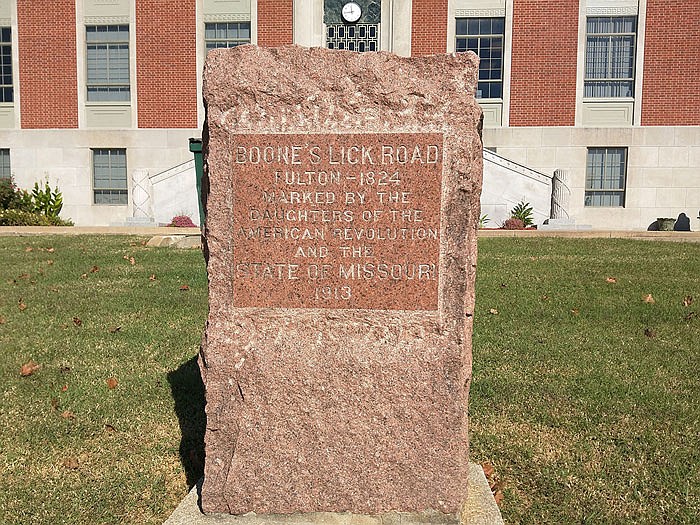Have you ever noticed that slab of granite on the south side of the Callaway County courthouse?
It reads "Boone's Lick Road. Fulton - 1824. Marked by the Daughters of the American Revolution and the State of Missouri. 1913."
The monument raises more questions than it answers. A new website launched by the Boone's Lick Road Association is here to help satisfy any curiosity.
Found at booneslickroad.org, the site explains Boone's Lick Road was named for Daniel Boone's sons, Nathan and Daniel Morgan Boone. In 1805, the brothers found a salty stream in Howard County and realized by boiling down the water ,they could extract salt to be used for seasoning and preserving.
As they hauled their salt along the route that would become Boone's Lick Road, other travellers began following the trail. Traffic boomed in the late 1810s, and small towns grew up along the route.
"I can't overstate how important the Boone's Lick Trail was," said Bruce Hackmann, Kingdom of Callaway Historical Society board member, who recently spoke at the annual dinner meeting.
Aside from being a way to get from place to place within Missouri, the road was also an important pathway to other, more well-known routes: the Oregon and Santa Fe trails.
According to Hackmann, a branch split off at Williamsburg (then called Fruits) in 1826 and wound its way through the newly established county seat of Fulton.
Fruits lay just west of the Mineola Valley, one of the challenging obstacles for people heading west by wagon.
"It usually took these pioneers two days to get through the Mineola Valley," Hackmann explained.
When they emerged on the far side, pioneers wanted to spend a few days resting and restocking before the next leg of the route. That's where the Fruits brothers came in. Their tavern was an essential watering hole along Boone's Lick Road.
"It really became a jumping-off point for westward expansion," Hackmann said.
Now, years later, Interstate 70 traces almost the exact same route through Missouri.
Despite the road's vast local importance, it hasn't yet been dedicated a National Historic Trail. That's one of the things the Boone's Lick Road Association, founded 2011, is trying to change. The association's other goal is to raise awareness and spread history about the road. The new website is their portal for doing just that.
"We encourage visitors to the website to familiarize themselves with it as it has many new features and a wealth of historical data," BLRA President David Sapp said in a press release.
View the site at booneslickroad.org.

